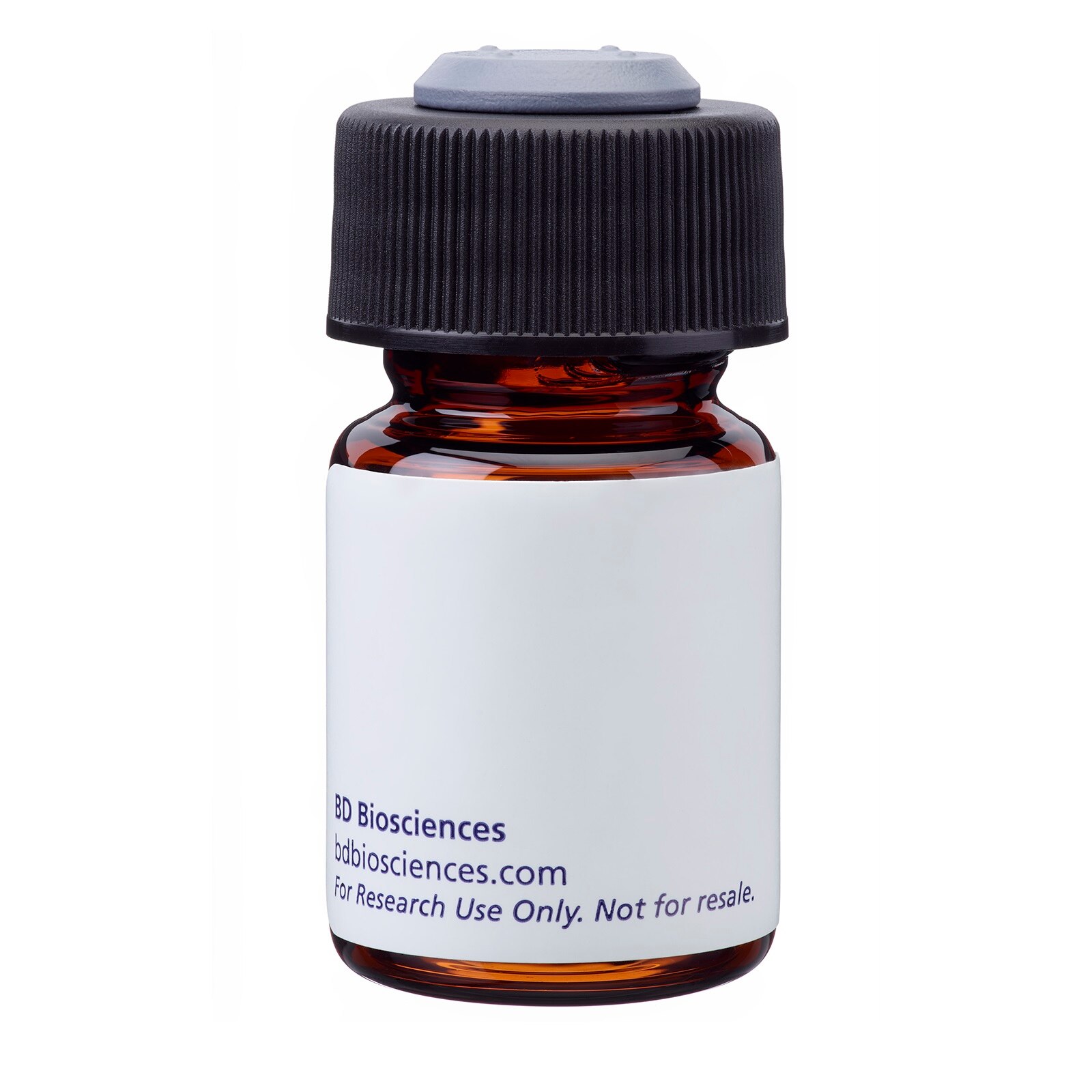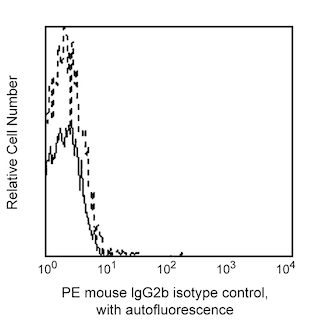Old Browser
This page has been recently translated and is available in French now.
Looks like you're visiting us from {countryName}.
Would you like to stay on the current country site or be switched to your country?




Flow cytometric profile of P-glycoprotein (CD243) expression on PMG-Y cell line. PMG-Y cells were internally transfected and developed to express CD243. They were stained with either PE Mouse IgG2b, ĸ Isotype Control (Cat. No. 555743; dashed line histogram) or PE Mouse Anti-Human P-glycoprotein (CD243) (Cat. No. 557003; solid line histogram). Fluorescent histograms were derived from gated events with the forward and side light-scattering characteristics of viable cells. Flow cytometric analysis was analyzed on a BD FACScan™.


BD Pharmingen™ PE Mouse Anti-Human P-glycoprotein (CD243)

Regulatory Status Legend
Any use of products other than the permitted use without the express written authorization of Becton, Dickinson and Company is strictly prohibited.
Preparation And Storage
Product Notices
- This reagent has been pre-diluted for use at the recommended Volume per Test. We typically use 1 × 10^6 cells in a 100-µl experimental sample (a test).
- An isotype control should be used at the same concentration as the antibody of interest.
- Source of all serum proteins is from USDA inspected abattoirs located in the United States.
- Caution: Sodium azide yields highly toxic hydrazoic acid under acidic conditions. Dilute azide compounds in running water before discarding to avoid accumulation of potentially explosive deposits in plumbing.
- For fluorochrome spectra and suitable instrument settings, please refer to our Multicolor Flow Cytometry web page at www.bdbiosciences.com/colors.
- Please refer to www.bdbiosciences.com/us/s/resources for technical protocols.
The 17F9 monoclonal antibody specifically binds to the 170-180 kDa transmembrane glycoprotein (P-glycoprotein), a product of the multidrug resistance-1 (MDR1) gene. This glycoprotein is expressed on MDR positive cells and has been reported to be expressed on many normal tissues, such as adrenal glands and endothelium, in the brain and skin. P-glycoprotein is known to impart drug resistance to cells by pumping many anti-cancer drugs out of the cytoplasm. 17F9 antibody is able to partially block the binding of UIC2 antibody (another MDR-specific monoclonal antibody).

Development References (3)
-
Benard J, Bourhis J, Riou G. Clinical significance of multiple drug resistance in human cancers. Anticancer Res. 1990; 10(5A):1297-1302. (Biology). View Reference
-
Goldstein LJ, Galski H, Fojo A, et al. Expression of a multidrug resistance gene in human cancers. J Natl Cancer Inst. 1989; 81(2):116-124. (Biology). View Reference
-
Shi T, Wrin J, Reeder J, Liu D, Ring DB. High-affinity monoclonal antibodies against P-glycoprotein. Clin Immunol Immunopathol. 1995; 76(1):44-51. (Biology). View Reference
Please refer to Support Documents for Quality Certificates
Global - Refer to manufacturer's instructions for use and related User Manuals and Technical data sheets before using this products as described
Comparisons, where applicable, are made against older BD Technology, manual methods or are general performance claims. Comparisons are not made against non-BD technologies, unless otherwise noted.
For Research Use Only. Not for use in diagnostic or therapeutic procedures.
Report a Site Issue
This form is intended to help us improve our website experience. For other support, please visit our Contact Us page.
